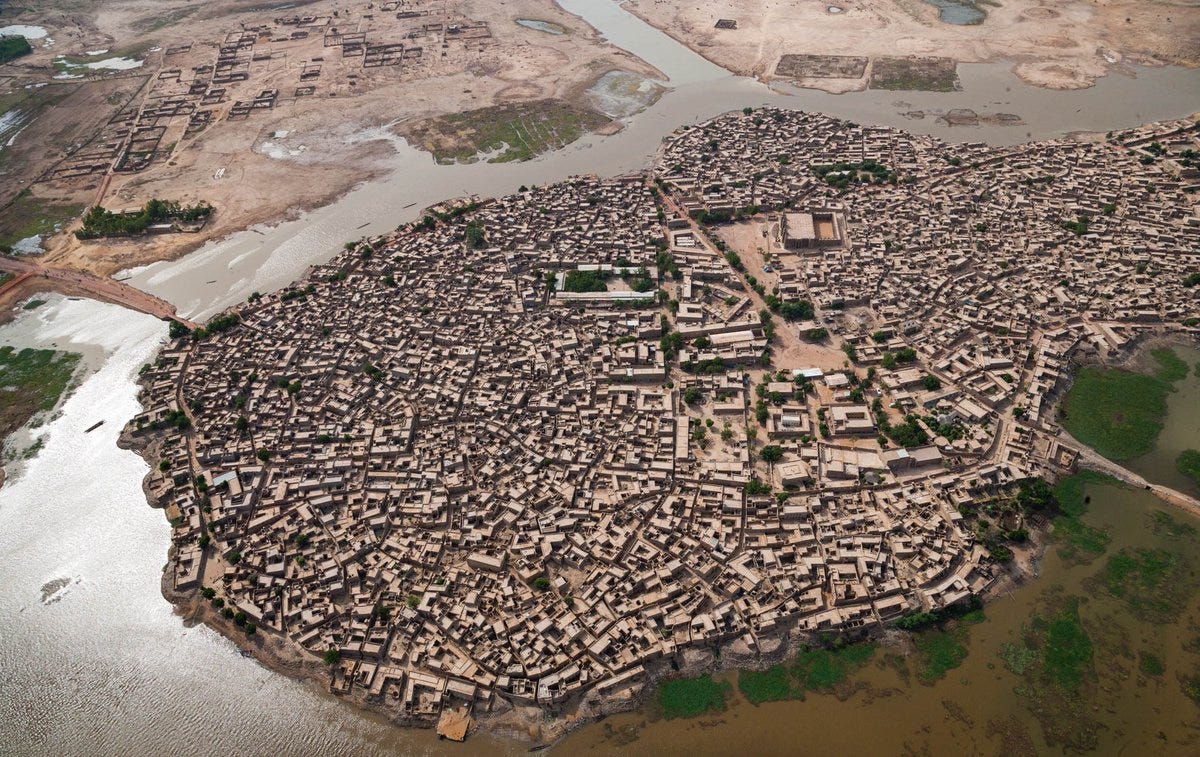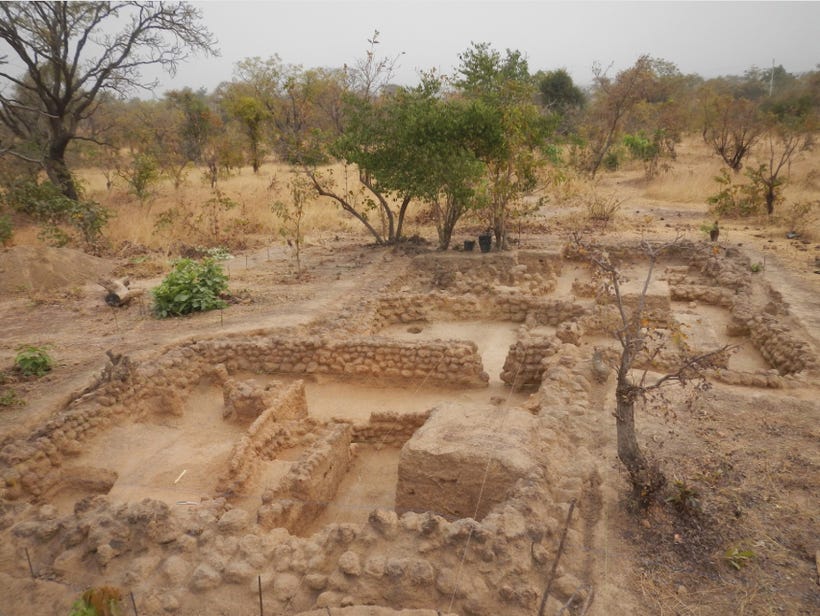The pre-Islamic civilizations of west Africa
While West Africa has been part of the Muslim world since the late Middle Ages, as famously demonstrated by the golden pilgrimage of Mali's Mansa Musa in 1324, Islam had only arrived in the region at the close of the 1st millennium. The first Muslim ruler in the region appears in an account from 990 CE which reports that the King of Gao “pretends before his subjects to be a Muslim and most of them pretend to be Muslims too.”1
The emergence of West African civilizations thus significantly predates the arrival of Islam, as shown by recent archaeological discoveries of pre-Islamic cities like Jenne-Jano in Mali, the ancient neolithic complex of Dhar Tichitt in Mauritania, and the earliest phases of the city of Gao.
Perhaps more than any other process of social complexity, the emergence of cities in West Africa presents the clearest argument against the diffusionist theories of early state formation in Africa.
Beginning in the 1970s, excavations of the mound of Jenne-Jeno about 2km from the medieval city of Djenne uncovered the remains of a large permanent settlement that expanded from a size of 7.4 ha in 300 B.C to 25ha by 400CE, surrounded by another 170ha of some 69 satellite sites in a dense, tightly integrated cluster within a 4-kilometer radius.
Beyond satisfying the archaeological definition of a city —a large and heterogeneous unit of settlement that provides a variety of services and manufactures to a larger Hinterland— the clustered organization of urbanism here stands in stark contrast to the unitary, agglomerated cities of the Mesopotamian floodplain, where immediately outside the city walls one finds only a depopulated hinterland.2
(top) excavations at Jenne-Jeno. (bottom) the medieval city of Djenne, Mali.
Discoveries at Jenne-Jeno opened the idea that interregional and long-distance trade in West Africa predated the better-known trade with the Maghreb that was associated with Muslim merchants. This was further confirmed in the 1980s by similar discoveries at the Neolithic site of Dhar Tichitt which was occupied from 2200BC to 200BC, and directly preceded the emergence of the Ghana empire.
The Tichitt Neolithic culture possesses a four-tier hierarchy of stone-built settlements interspersed over 200,000 km2 —which includes a proto-urban capital at Dakhlet el Atrouss-I— and has strong material connections to the foundation of other ancient settlements in the neighboring region at Dia, Mema and Jenne-Jano during the first-millennium BC. As such, Tichitt could be viewed as the western counterpart of ancient Kerma in the Nubian Nile Valley, but it remains much less celebrated and discussed in world archaeology.
Prior to the discovery of Tichitt, scholars had for long argued for the influence of pre-Islamic North African architectural forms on the Sahel. For example; there were claims made as recently as the 1980s that the Romans influenced the Berber ‘courtyard house’ which was then transmitted to West Africa.3
According to the archaeologist Kevin MacDonald, “Were it not for the ample and early architecture of the Tichitt Tradition an argument could have been advanced for a primarily North African role in the creation of the West African compound."4
One of the two funerary monuments of Dakhlet el Atrouss 1, east of Akreijit. Image by R. Vernet.
walled compounds in the Akreijit Regional Center in the Dhar Tichitt ruins. Getty Images.
Additionally, the earliest documentary references to the empire of Ghana and the city of Gao predate their adoption of Islam by about two centuries. The wealthy, gold-trading kings of Ghana appear in various external accounts from the 8th to 11th century as non-Muslims, long before their adoption of the religion around 1076CE.
Similarly, the excavations at the city of Gao during the 1990s and early 2000s have shown that its monumental palaces predated the conversion of its King mentioned in the introduction above. The material recovered from the site has also revealed that the city’s inhabitants were predominantly local Songhay speakers who were at the time non-Muslim.
Ruins of the ‘Pillar House’ and the ‘Long House’ at Gao Ancien, constructed around 900 CE5. Images by M. Cisse.
Recent archaeological and historical research in West Africa has therefore provided evidence for the independent emergence of large nucleated settlements, complex societies, and interregional trade that was independent of external influences and created the foundation of later kingdoms and empires.
This is best exemplified by the discoveries of pre-Islamic sites in Burkina Faso at; Loropeni, Oursi, and Kissi, which were occupied from the start of the common era to the mid-second millennium. These three sites consist of large nucleated settlements that feature massive stone walls enclosing elite houses, a double-storey building complex, and an elite cemetery with grave goods imported from the Roman provinces of North Africa and Spain.
The history of the pre-Islamic sites of Burkina Faso is the subject of my latest Patreon Article, please subscribe to read more about it here:
Partial view of a structure (Lor-sat 27) at Loropéni, Burkina Faso. Image by H. Farma.
View of the interior of the Loropeni enclosure, North compartment. Image by Henry Hurst.
Medieval West Africa: Views from Arab Scholars and Merchants by Nehemia Levtzion, Jay Spaulding pg 8
Ancient Middle Niger: Urbanism and the Self-organizing Landscape By Roderick J. McIntosh pg 17
Hatumere: Islamic Design in West Africa by Labelle Prussin pg 105-108
Urbanisation and State Formation in the Ancient Sahara and Beyond edited by Martin Sterry, David J. Mattingly pg 500
Archaeological Investigations of Early Trade and Urbanism at Gao Saney by M. Cisse pg 140, 270-271.










I especially love the bit on Loropeni many folks were not expecting that, so much is out there under reported or remained completely undiscovered, one thing I was not expecting to see these tombs as being as massive as they were, I looked on some satellite images and they don't really give you the depth of their massiveness especially if there is nothing else to measure them against , thanks also Isaac.